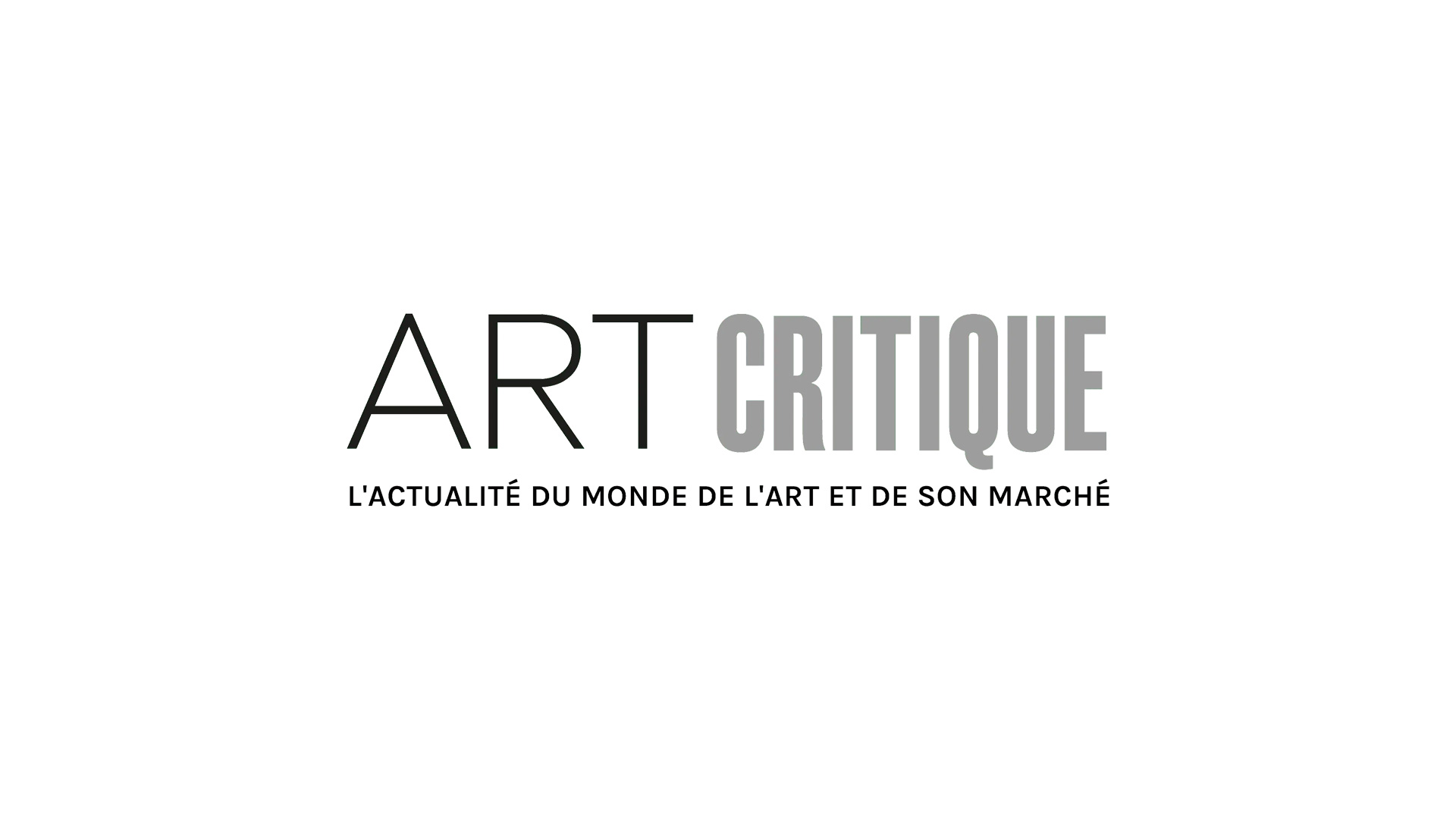On a lovely spring afternoon in April 2014, Charlotte Denoël, chief curator of medieval manuscripts at the Bibliothèque nationale de France, the French national library in Paris, invited the Dutch conceptual artist Jan Dibbets to consult some documents she felt might be of interest to him. The two had met previously and she had already introduced to him to some of the rare illuminated works from the library’s collection, but this time was utterly different: “It was love at first sight,” confesses Dibbets. Delicately perched on a little red-velvet cushion, the manuscript was De laudibus sanctae crucis, written at the beginning of the ninth century by the monk Rabanus Maurus. Dibbets calls it “completely different from anything I had ever seen, so modern, so original and minimalist, radically contemporary…. The pages were magical, filled with letters, mathematically arranged around simple colored shapes—circles, crosses, triangles, squares—harmoniously integrated into the text, formed a magnificent abstract whole, as if someone from the twenty-first century might have been working on it 1,200 years ago…”
Created between 810 and 814, when Rabanus Maurus was a monk at the Fulda monastery in Germany, the manuscript—in English, “Veneration of the Holy Cross”—is surprisingly inventive: a series of 28 visual poems structured around a single matrix, its verses organized in squares or rectangles, all with the same number of letters and structured around the form of the cross.
In collaboration with the art historian Erik Verhagen, Jan Dibbets and Charlotte Denoël decided to “transpose” the manuscript into the present, by surrounding it with contemporary art, thus creating a dialogue in a deliberately non-scientific, “anhistoric” and open-ended manner. The resulting exhibition, entitled “Make It New. Conversations avec l’art médiéval. Carte blanche à Jan Dibbets” offers up a dialogue between the extraordinary De laudibus sanctae crucis and a selection of his own work and minimalist, conceptual and land art created more than one thousand years later by Dibbets and his peers, including Carl Andre, Alan Charlton, Ad Dekkers, Donald Judd, Sol LeWitt, Richard Long, François Morellet, Niele Toroni, and Franz Erhard Walther.
Sober and elegant, the exhibition unfurls around Long’s floor installation and beautifully laid out, using five of the buildings small, windowed crypts in a manner that echoes the work’s austere, minimalist design and evokes the shape of cross.
“Make it new” (the title borrows from Ezra Pound’s oft-quoted battle-cry Make it new,, from a collection of literary essays he published in 1934) is on display through February 10 at the BNF François-Mitterrand and is accompanied by a catalogue, beautifully written and well-documented.





